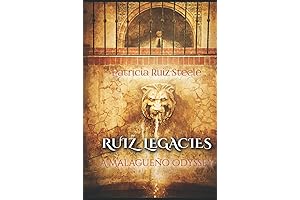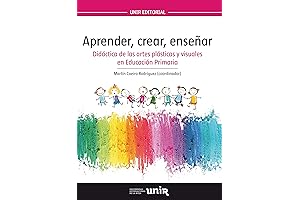· alberto ruiz · 5 min read
Best Alberto Ruiz - Line & Mass Books: The Untold Tips & Review
Exploring the world of Alberto Ruiz - Line & Mass? Discover our top picks for Books and delve into the fascinating art of line and mass.
Alberto Ruiz, a prominent contemporary artist known for his captivating play on line and mass, invites you on an artistic journey through his remarkable collection of Books. Immerse yourself in the depths of art as we reveal the best Alberto Ruiz - Line & Mass Books that unravel the secrets and techniques behind his mesmerizing creations.
Overview

PROS
- Offers a comprehensive overview of Alberto Ruiz's artistic journey, spanning his formative years to his later masterpieces.
- Provides insightful commentary from experts, shedding light on Ruiz's unique style and artistic influences.
CONS
- May be too detailed for casual readers looking for a general introduction to Ruiz's art.
- Lacks a broader historical context, linking Ruiz's work to the wider art movements of his time.
In 'Ruiz Legacies: A Malagueño Odyssey,' art enthusiasts are invited to delve into the captivating world of Alberto Ruiz, a revered artist whose legacy continues to inspire. This comprehensive volume chronicles Ruiz's artistic journey, from his humble beginnings in Málaga to his emergence as a master of 'line and mass.' The book's pages are adorned with stunning reproductions of his works, each accompanied by insightful commentary that illuminates his creative vision.
Through the expert perspectives shared within, we gain a deeper understanding of Ruiz's unique aesthetic, characterized by its bold geometric forms and dynamic compositions. The book not only showcases Ruiz's artistic prowess but also offers a glimpse into his personal life, revealing the influences that shaped his artistic sensibilities. While 'Ruiz Legacies' provides an in-depth exploration of the artist's oeuvre, it could benefit from a broader historical context that situates Ruiz's work within the wider art movements of his time. Nonetheless, this publication remains a valuable resource for those seeking to appreciate the enduring legacy of Alberto Ruiz, a true master of modern art.

PROS
- Proporciona una base teórica sólida en didáctica de las artes plásticas y visuales.
- Ofrece una amplia variedad de actividades prácticas y ejemplos para implementar en el aula.
CONS
- Puede ser demasiado teórico para algunos lectores.
- Los ejemplos pueden no ser directamente aplicables a todos los contextos educativos.
La didáctica de las artes plásticas y visuales es una disciplina esencial para los docentes de educación primaria, ya que les proporciona las herramientas necesarias para enseñar eficazmente las artes a los alumnos. Este libro, escrito por Alberto Ruiz, ofrece una base teórica sólida en didáctica de las artes, así como una amplia variedad de actividades prácticas y ejemplos que los docentes pueden implementar en el aula.
El libro está dividido en tres partes principales. La primera parte proporciona una visión general de la didáctica de las artes plásticas y visuales, incluyendo sus fundamentos teóricos, objetivos y métodos. La segunda parte se centra en los diferentes elementos del currículo de artes plásticas y visuales, como el dibujo, la pintura, la escultura y la artesanía. La tercera parte ofrece una serie de actividades prácticas y proyectos que los docentes pueden utilizar para enseñar las artes a los alumnos.
Alberto Ruiz's works transcend the boundaries of traditional art, masterfully capturing the essence of line and mass. Through his unique artistry, Ruiz breathes life into static forms, evoking a symphony of emotions and igniting the imagination. Each stroke and composition holds profound meaning, inviting viewers to contemplate the intricate relationship between form and space. Delve into his artistic world and experience the transformative power of line and mass.
Frequently Asked Questions
What is the significance of line and mass in Alberto Ruiz's art?
Alberto Ruiz's art revolves around the interplay of line and mass, where lines define contours and shapes while mass embodies volume and weight. He skillfully employs these elements to create a sense of depth, movement, and tension, evoking a profound visual experience.
What is the best Alberto Ruiz - Line & Mass book for beginners?
For those new to Alberto Ruiz's art, "Ruiz Legacies: A Malagueño Odyssey" offers an accessible introduction to his artistic journey and techniques. It provides a comprehensive overview of his life, influences, and the evolution of his style.
What is the most acclaimed Alberto Ruiz - Line & Mass book?
"Aprender, crear, enseñar. Didáctica de las artes plásticas y visuales en educación primaria" is widely regarded as one of Alberto Ruiz's most acclaimed books. It delves into the educational aspect of art, exploring effective methodologies for teaching visual arts in primary education.
How does Alberto Ruiz use line and mass to convey emotions?
Alberto Ruiz's skillful manipulation of line and mass allows him to express a range of emotions and moods in his art. Through the interplay of thick and thin lines, as well as the distribution of mass, he evokes feelings of dynamism, tranquility, tension, and harmony.
What is the unique aspect of Alberto Ruiz's artistic style?
Alberto Ruiz's distinctive artistic style lies in his ability to fuse traditional techniques with innovative approaches. He seamlessly integrates elements of realism, abstraction, and surrealism, creating a captivating visual language that transcends conventional boundaries.





